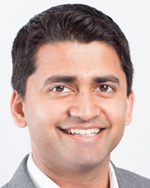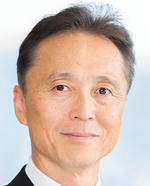6 Biopharma Executives On Breakthroughs For 2019

By Rob Wright, Chief Editor, Life Science Leader
Follow Me On Twitter @RfwrightLSL

Ever wonder where biopharmaceutical executives are hoping to see breakthroughs?
We can relate.
That’s why we posed such questions to 12 biopharmaceutical CEOs and presidents in our annual outlook issue. But unfortunately it is not always possible to shoehorn all of these great insights into our print publication. So, we’ve developed our increasingly popular online section — Beyond The Printed Page — as a repository for this additional content. Here you will find nearly 100 articles on a wide variety of topics. And though Beyond The Printed Page does not require a subscription, Life Science Leader magazine does, which you can get for FREE here.
The six executive participants for this installment on breakthroughs include:
- Pavan Cheruvu, M.D., CEO, Axovant Sciences
- Habib Dable, president and CEO of Acceleron Pharma
- Mary Lynne Hedley, Ph.D., cofounder, president and COO, Tesaro
- Ted Love, M.D., president and CEO, Global Blood Therapeutics
- Adelene Perkins, CEO and chair, Infinity Pharmaceuticals
- Kenji Yasukawa, Ph.D., president and CEO, Astellas Pharma
We hope you find this information helpful as you ready for biopharma in 2019 — and beyond.
WHAT THERAPEUTIC AREA DO YOU ANTICIPATE HAVING A SIGNIFICANT BREAKTHROUGH IN 2019 OR SHORTLY THEREAFTER?
 Pavan Cheruvu, M.D., CEO, Axovant Sciences: I believe 2019 will be a golden year for gene therapies targeting neurological and neuromuscular conditions. Our understanding of the underlying biology of neurologic diseases, including genetically-driven conditions, is profoundly greater today than it was even two years ago, and this has given rise to a third wave of therapies focused on genetic insertion, silencing, or modification.
Pavan Cheruvu, M.D., CEO, Axovant Sciences: I believe 2019 will be a golden year for gene therapies targeting neurological and neuromuscular conditions. Our understanding of the underlying biology of neurologic diseases, including genetically-driven conditions, is profoundly greater today than it was even two years ago, and this has given rise to a third wave of therapies focused on genetic insertion, silencing, or modification.
The first wave of neurotherapeutics was ushered in by an improved understanding of neurotransmitter and receptor biology. This gave rise to small molecule therapies to target synaptic receptors, such as SSRIs (selective serotonin reuptake inhibitors), or to restore deficient neurotransmitters, as is the case with levodopa. Then, as we deepened our understanding of cellular and systems biology, a new wave of innovation opened up – enabling the exploration of neuroprotective approaches that reduced inflammation and attempted to promote intracellular clearance or autophagy. As specific neural circuits and networks became increasingly well understood, direct modulation of neural circuit activity became possible, for example via deep brain stimulation.
Now, with vastly greater data available on the underlying genomics and proteomics of neurological diseases, we are on the cusp of a new era of gene therapies for these conditions. Multiple approaches such as gene transfer to correct or replace dysfunctional or deficient proteins, gene editing, or gene silencing all have the potential to not just address symptoms or slow disease progression, but stop the disease, reverse it, and in some cases, even cure it. Gene therapy and other treatments have historically been challenged in addressing neurological diseases due to delivery challenges to the brain to achieve therapeutic levels. We have now reached the point where improvements in delivery mechanisms, novel vector designs, and payload optimization will enable major successes. I believe we will see the first of these successful gene therapies in the clinic within the next year.
 Ted Love, M.D., president and CEO, Global Blood Therapeutics (GBT): After decades of minimal innovation and investment in developing new therapies for sickle cell disease (SCD), both small and large biopharma companies utilizing a broad array of treatment modalities are giving this rare disease the attention it deserves. Given the investment that other rare diseases have received, this attention is long overdue. Cystic fibrosis, for example, an inherited disease that affects only about one-third as many people as SCD, has received 3.5 times more funding from the NIH; historically this imbalance has been even more dramatic.
Ted Love, M.D., president and CEO, Global Blood Therapeutics (GBT): After decades of minimal innovation and investment in developing new therapies for sickle cell disease (SCD), both small and large biopharma companies utilizing a broad array of treatment modalities are giving this rare disease the attention it deserves. Given the investment that other rare diseases have received, this attention is long overdue. Cystic fibrosis, for example, an inherited disease that affects only about one-third as many people as SCD, has received 3.5 times more funding from the NIH; historically this imbalance has been even more dramatic.
The recent influx in SCD research is due in part to the FDA’s support of initiatives to better understand how the complex manifestations of this disease can be most appropriately assessed in clinical trials. Biopharma companies are focusing on numerous innovative approaches to treat SCD, including potentially disease-modifying therapies that address the root cause of the disease by preventing the sickling of the red blood cells (polymerization), or correcting the underlying genetic mutation through gene therapy or gene editing. Other approaches focus on addressing the symptoms of SCD, such as pain crises, by preventing red blood cells from sticking together. Given the new emphasis on SCD drug discovery and development, there is the potential for multiple new therapies to be approved in the United States by mid-2020.
 Adelene Perkins, CEO and chair, Infinity Pharmaceuticals: Oncology. In medicine and drug development, one breakthrough often leads to the next — given that the solution to one problem frequently sows the seed for the next. In the last decade, the discovery and development of immune checkpoint inhibitors has changed the way we treat cancer, as reflected in the 2018 Nobel Prize being awarded to James Allison and Tasuku Honjo for their work in immunotherapy. Their revolutionary insights on the regulatory circuits associated with initiating and sustaining an immune response has helped establish immunotherapy as a mainstay of cancer treatment. But beyond the extraordinary impact their work has had on the lives of many patients and the field of cancer research, it also led to the identification of another important problem. Because while checkpoint inhibitors provide a significant benefit for some patients, the vast majority do not respond to this therapy, and some who do may ultimately relapse. This new problem, and the groundbreaking research directed to a solution, has revealed that even in the presence of checkpoint inhibitors the tumor microenvironment can counteract and suppress an immune response. In other words, activating the immune system with checkpoint inhibitor therapy alone for some patients isn’t enough. To unleash the full power of the immune system, we also need to overcome immune suppression by the tumor microenvironment.
Adelene Perkins, CEO and chair, Infinity Pharmaceuticals: Oncology. In medicine and drug development, one breakthrough often leads to the next — given that the solution to one problem frequently sows the seed for the next. In the last decade, the discovery and development of immune checkpoint inhibitors has changed the way we treat cancer, as reflected in the 2018 Nobel Prize being awarded to James Allison and Tasuku Honjo for their work in immunotherapy. Their revolutionary insights on the regulatory circuits associated with initiating and sustaining an immune response has helped establish immunotherapy as a mainstay of cancer treatment. But beyond the extraordinary impact their work has had on the lives of many patients and the field of cancer research, it also led to the identification of another important problem. Because while checkpoint inhibitors provide a significant benefit for some patients, the vast majority do not respond to this therapy, and some who do may ultimately relapse. This new problem, and the groundbreaking research directed to a solution, has revealed that even in the presence of checkpoint inhibitors the tumor microenvironment can counteract and suppress an immune response. In other words, activating the immune system with checkpoint inhibitor therapy alone for some patients isn’t enough. To unleash the full power of the immune system, we also need to overcome immune suppression by the tumor microenvironment.
WHAT THERAPEUTIC CATEGORY ARE YOU ROOTING FOR TO HAVE A SIGNIFICANT BREAKTHROUGH, AND WHAT IMPACT DO YOU THINK SUCH WILL HAVE ON BIOPHARMA?
 Habib Dable, president and CEO of Acceleron Pharma: I would love to see a breakthrough in the area of neuromuscular disease (NMD), for reasons far beyond the fact that we at Acceleron are working in this space. So many NMDs are truly devastating for patients and their families, and for most, there are few if any viable therapeutic options. However, it’s clear that many NMDs are now serving as the proving grounds for newer mechanisms and modalities. For example, we’re seeing positive outcomes from antisense oligonucleotides for spinal muscular atrophy, and I would anticipate that with additional refinement to overcome current delivery challenges and other shortcomings, this technology will be applied more broadly. The space is also attracting a variety of RNA-based therapeutics and, of course, gene therapies. It’s intriguing to contemplate a future in which novel, disease-modifying approaches are transforming the lives of NMD patients while simultaneously demonstrating the potential do so in many other therapeutic areas.
Habib Dable, president and CEO of Acceleron Pharma: I would love to see a breakthrough in the area of neuromuscular disease (NMD), for reasons far beyond the fact that we at Acceleron are working in this space. So many NMDs are truly devastating for patients and their families, and for most, there are few if any viable therapeutic options. However, it’s clear that many NMDs are now serving as the proving grounds for newer mechanisms and modalities. For example, we’re seeing positive outcomes from antisense oligonucleotides for spinal muscular atrophy, and I would anticipate that with additional refinement to overcome current delivery challenges and other shortcomings, this technology will be applied more broadly. The space is also attracting a variety of RNA-based therapeutics and, of course, gene therapies. It’s intriguing to contemplate a future in which novel, disease-modifying approaches are transforming the lives of NMD patients while simultaneously demonstrating the potential do so in many other therapeutic areas.
 Mary Lynne Hedley, Ph.D., cofounder, president and COO, Tesaro: Over the last 5-7 years, breakthroughs in immuno-oncology (IO) have resurrected hope in patients, caregivers, and healthcare providers as the suffering caused by cancer is ameliorated and to some degree surmounted by the durable and clinical benefit IO -related drugs provide to patients suffering from cancer. A monumental resurgence of resources, intellectual and financial, are now being funneled into the study of immunotherapeutics in an effort to further advance the field, bolstered further by the recent awarding of the Nobel prize to James Allison and Tasuku Honjo for their work in the field.
Mary Lynne Hedley, Ph.D., cofounder, president and COO, Tesaro: Over the last 5-7 years, breakthroughs in immuno-oncology (IO) have resurrected hope in patients, caregivers, and healthcare providers as the suffering caused by cancer is ameliorated and to some degree surmounted by the durable and clinical benefit IO -related drugs provide to patients suffering from cancer. A monumental resurgence of resources, intellectual and financial, are now being funneled into the study of immunotherapeutics in an effort to further advance the field, bolstered further by the recent awarding of the Nobel prize to James Allison and Tasuku Honjo for their work in the field.
I look forward to the day when a similar renaissance occurs in the fight against cognitive disease. The loss of identity has to be one of the most personally dehumanizing manifestation of disease. The pernicious persistent decline in cognitive abilities in an individual who is able to fully comprehend the inevitability of the impending loss, must rank among the most terrifying and impactful of disabling diseases. Any meaningful clinical advance will catalyze a much-needed resurgence of energy into the battle our scientific and medical colleagues fight on a daily basis to address this constellation of diseases that represent one class of the fastest growing, most poorly diagnosed, and expensive to treat in the United States today.
 Kenji Yasukawa, Ph.D., president and CEO, Astellas Pharma: There have been tremendous advancements in small molecule treatments over the past few decades, with innovation in areas such as oncology seemingly accelerating at an exponential pace. Today, patients are living longer, with better qualities of life and in some cases even being cured completely of disease. I expect this pace to continue to accelerate and believe the next great area of opportunity will be in harnessing the body’s own powers of regeneration to alleviate symptoms and cure diseases with high unmet medical needs. In particular, we believe fully in the promise of deploying stem cells to potentially treat, reverse, and cure disorders of molecular destruction or degeneration. We have started in the obvious places, such as the eye and macular degeneration, but are looking to underpin these living medicines with technology platforms that help overcome cell rejection and expand the potential applications for regenerative medicine to lead the new wave of scientific value creation.
Kenji Yasukawa, Ph.D., president and CEO, Astellas Pharma: There have been tremendous advancements in small molecule treatments over the past few decades, with innovation in areas such as oncology seemingly accelerating at an exponential pace. Today, patients are living longer, with better qualities of life and in some cases even being cured completely of disease. I expect this pace to continue to accelerate and believe the next great area of opportunity will be in harnessing the body’s own powers of regeneration to alleviate symptoms and cure diseases with high unmet medical needs. In particular, we believe fully in the promise of deploying stem cells to potentially treat, reverse, and cure disorders of molecular destruction or degeneration. We have started in the obvious places, such as the eye and macular degeneration, but are looking to underpin these living medicines with technology platforms that help overcome cell rejection and expand the potential applications for regenerative medicine to lead the new wave of scientific value creation.
